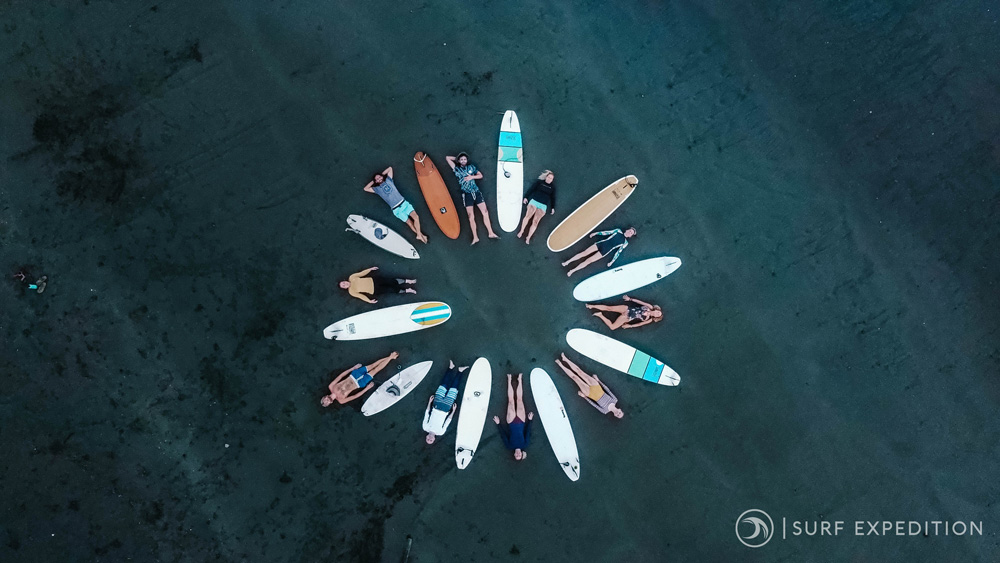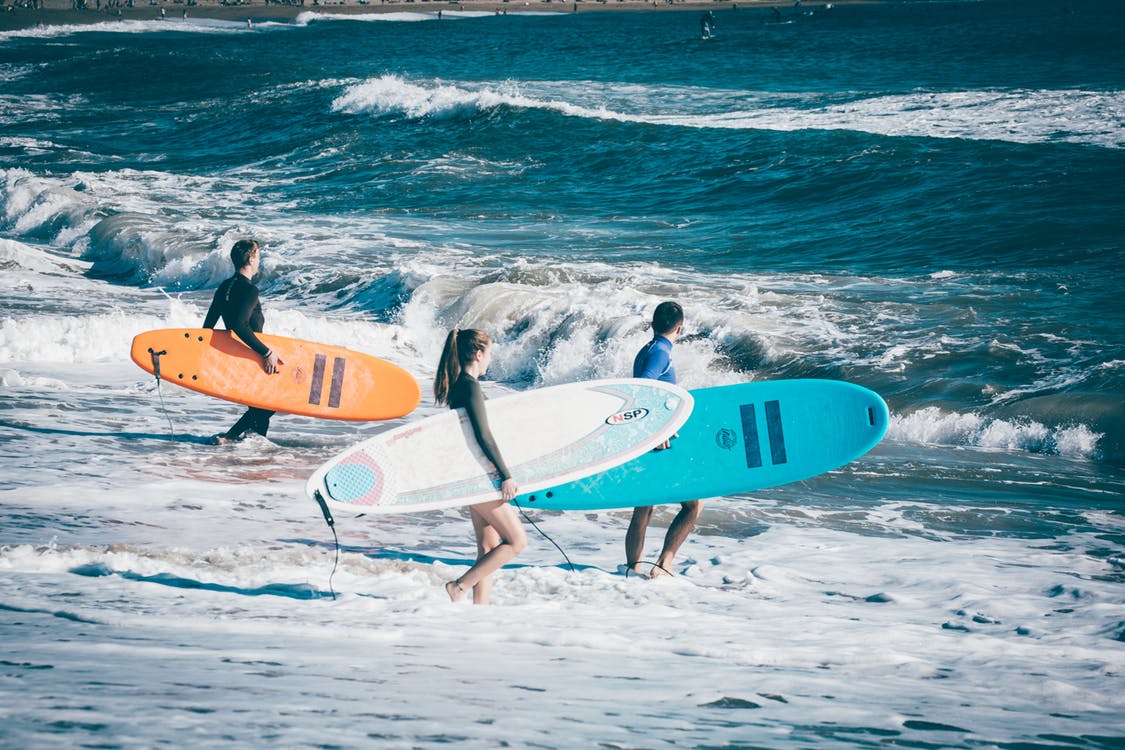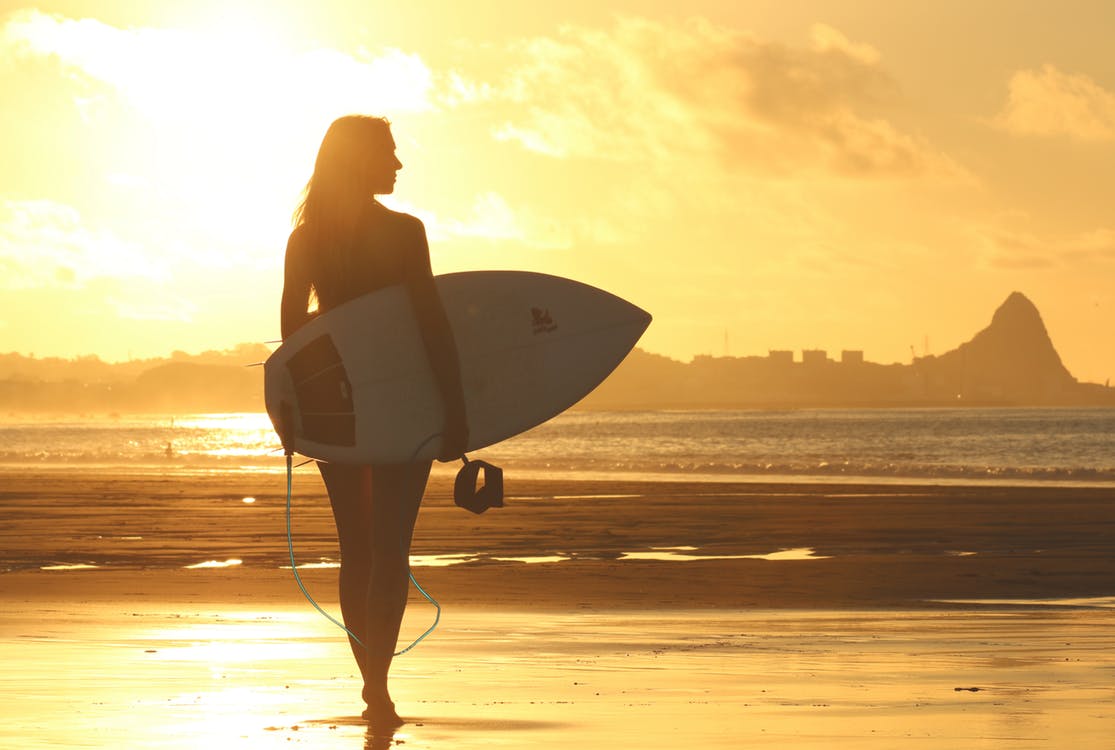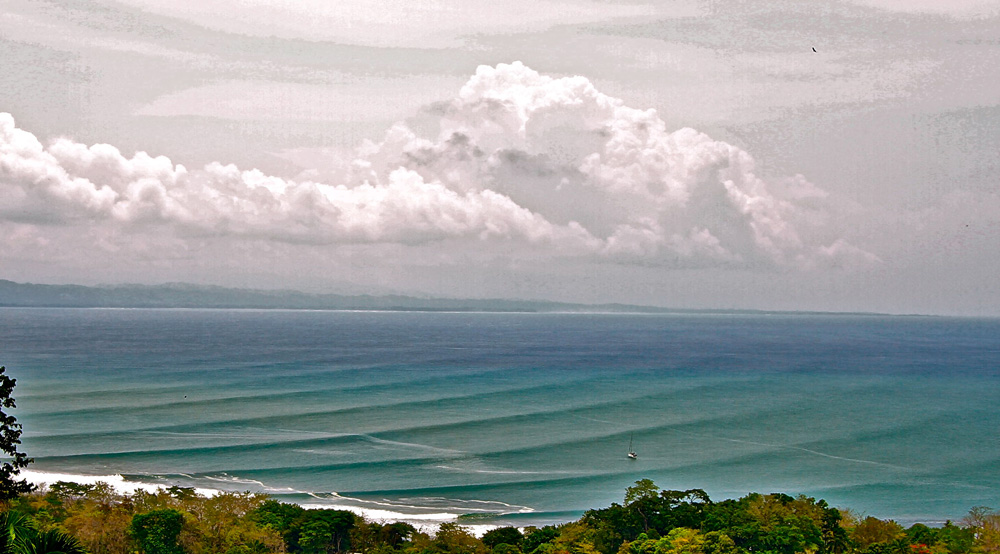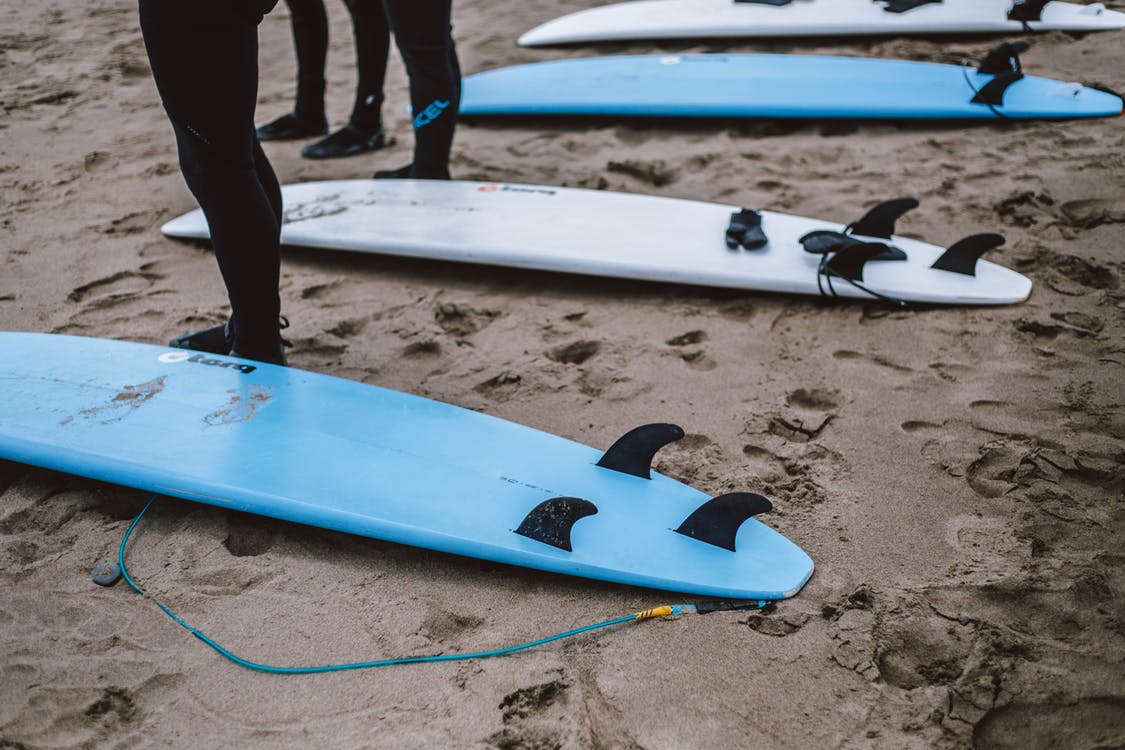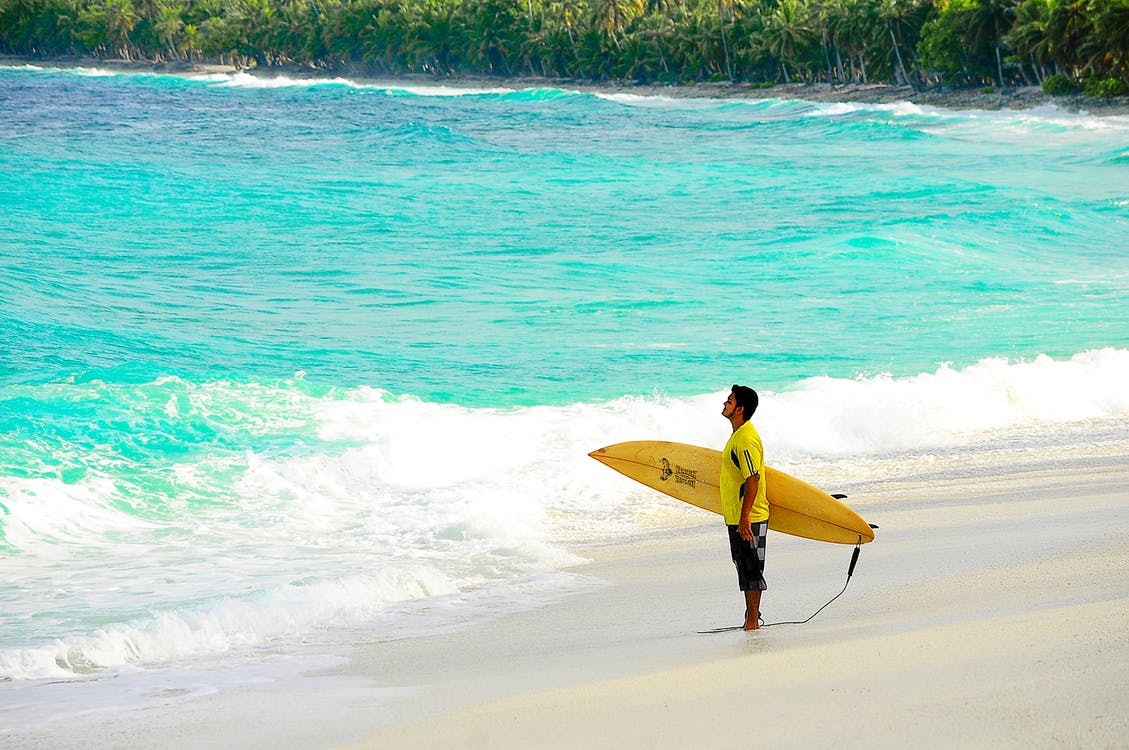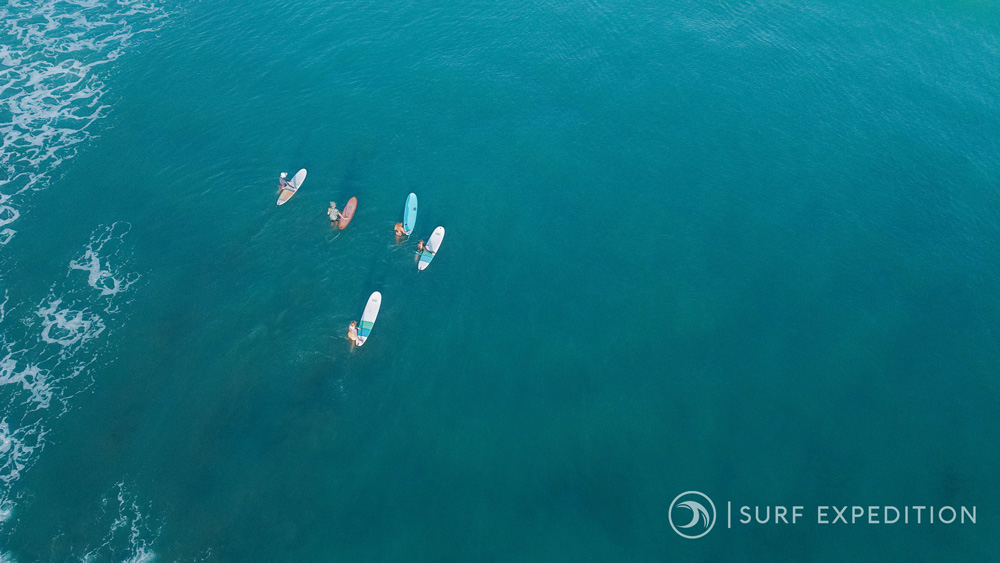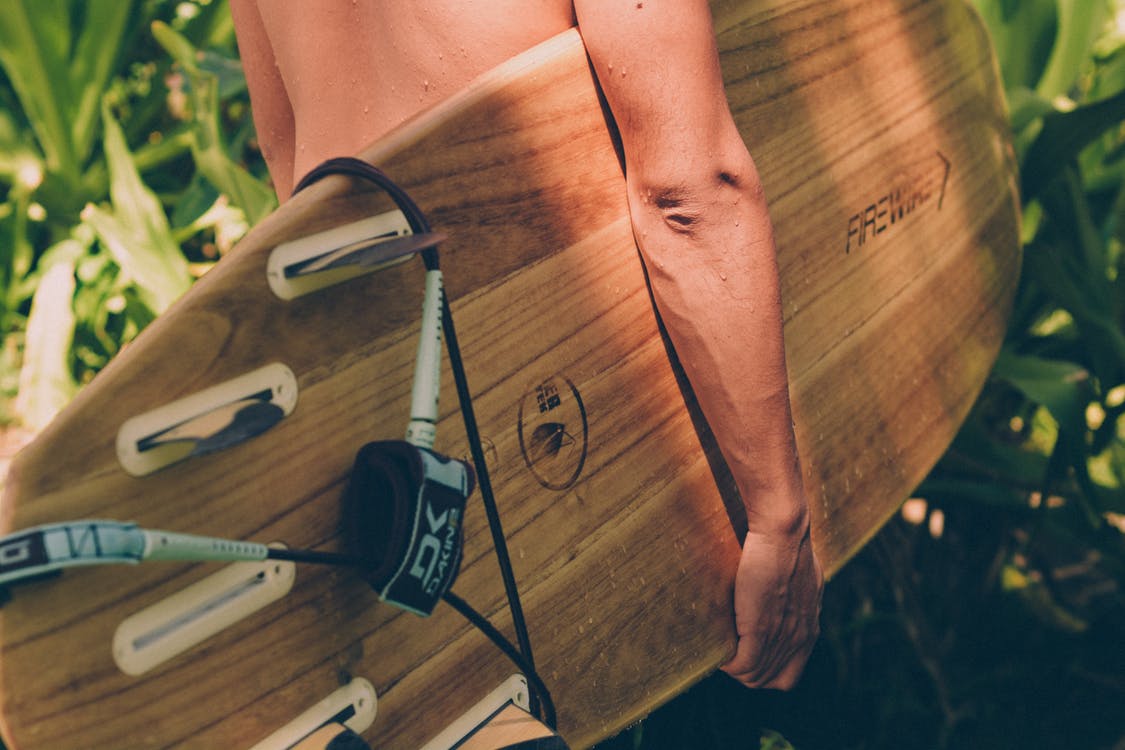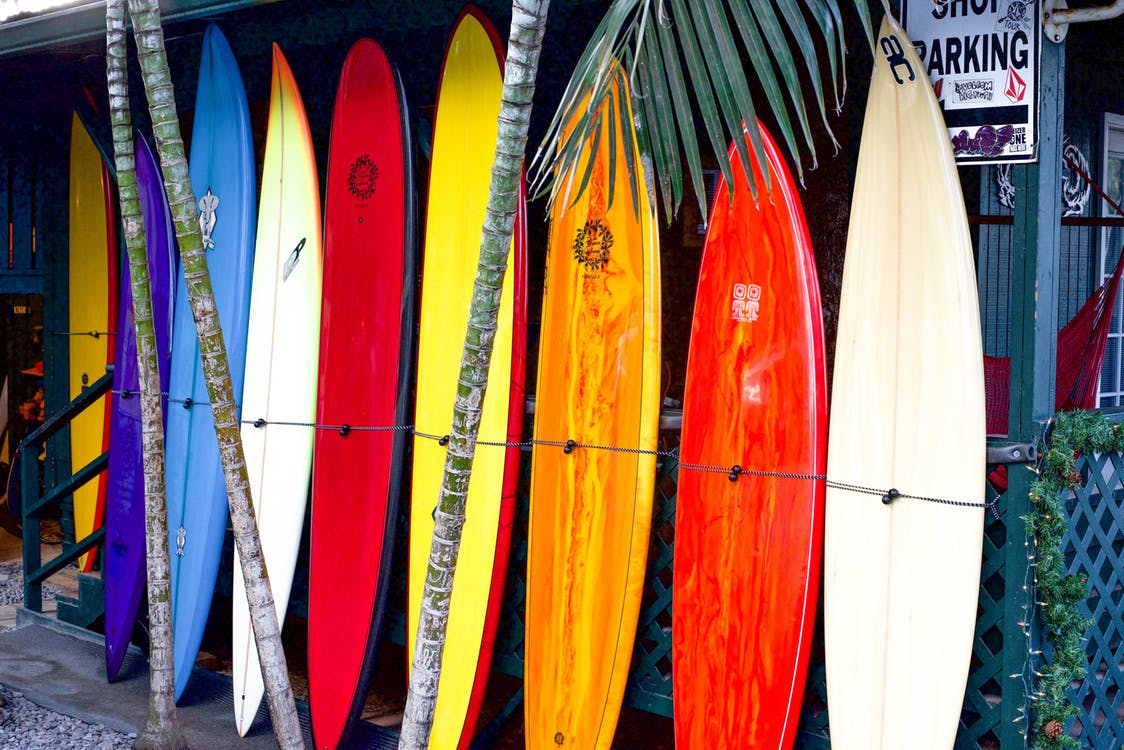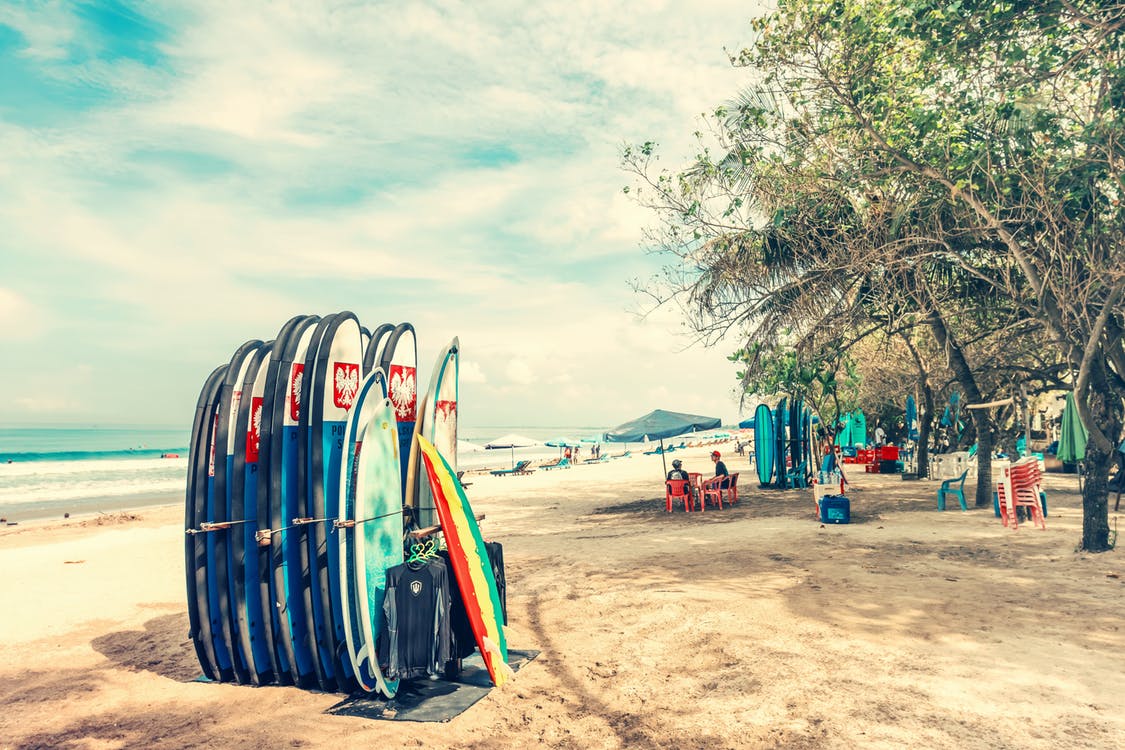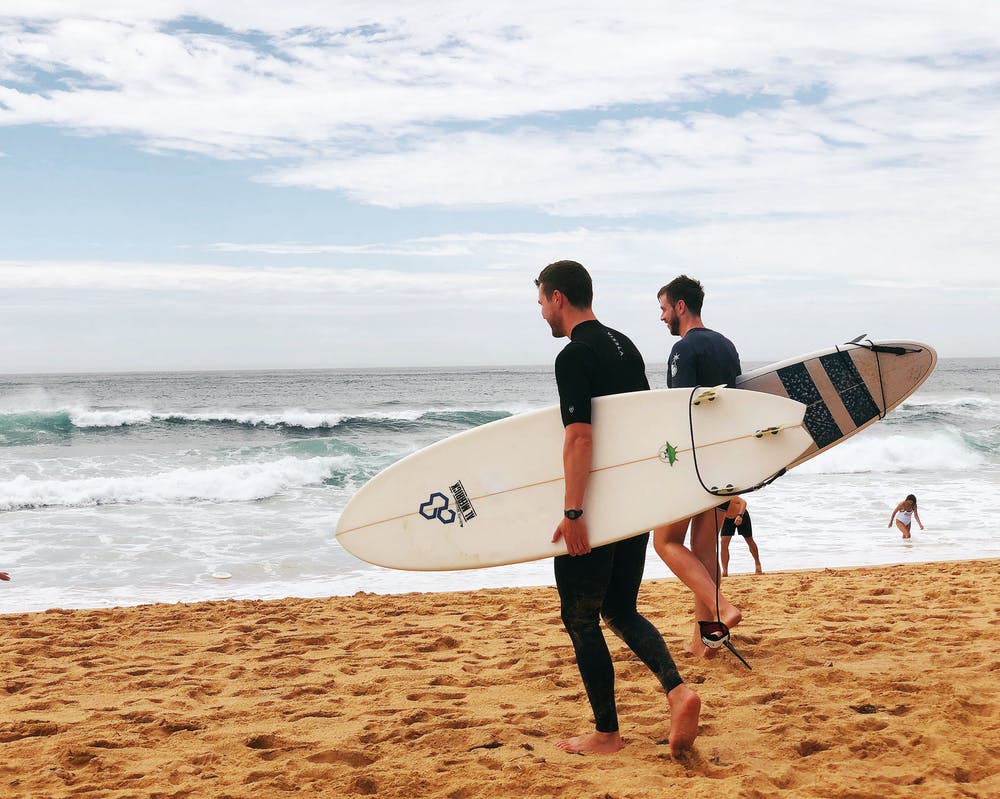
22 Aug Beginner Longboard Guide: Buying your first longboard
Beginner Longboard Guide: Buying your first longboard
Are you a beginner surfer looking to ride the waves with ease? This beginner longboard guide answers all your questions about buying your first longboard, and includes a helpful guide to the best beginner longboards on the market.
Everything you need to know about your first longboard:
- What size of surf longboard should I get?
- Is learning to surf with a longboard hard?
- What Types Of Surfboards Are Best For beginners?
- Why are longboards best for beginner surfers?
- Is it better to learn surfing with a shortboard or a longboard?
- What are the pros and cons of using a longboard vs. a shortboard?
- What are Fun Boards / Mini Malibu (Mini Mal)?
- How to ride a longboard?
- For what type of surf are longboards suitable?
- Are Shortboards Good for beginners?
- What are the different types of surfboard tails and how do they affect your surfing style
- What are the best longboards for beginners?
- What material should my surf longboard be made of?
- Should I buy a new or a secondhand surf longboard?
- What is HPLB (High-Performance Longboard)?
Longboards are like the friendly giants of the surfboard world. They are long, wide, and stable, making them ideal for beginners. When you’re just starting to surf, you need the ability to stand up on the board and catch those waves.
Longboards provide just that. They are more forgiving and will help you balance as you learn to stand on the board. As a beginner surfer, you’ll appreciate the comfort and ease of riding a longboard.
What type of longboard should I get?
As surfers, we are not only lucky to have a wide range of waves: we are also lucky enough to have many types of surfboards with which we can enjoy them.
Now, you might be wondering what are the best beginner longboards out there to start surfing. Here’s the beginner longboard guide to help you with just that.
As a matter of fact, choosing the right surf longboard is very important to the experience. If you are a first-time longboard buyer, you will need some tips on how to buy the right one for you. Since choosing a suitable board can be very confusing for beginners, we have summed everything up in this beginner longboard guide.
Is learning to surf with a longboard hard?
Moving forward, learning how to surf will not be hard if you have the right beginner longboard and someone supportive with you in the water. However, if you follow the advice of professionals, you should have a great time and improve quickly! This is exactly what we offer at our surf camp in Costa Rica– expert surf coaching so you can improve your surfing skills and gain confidence in the water!
Improve your surfing in Costa Rica!
Interested in improving your surfing skills? Check out our surf coaching retreats in Costa Rica.
What Size of Beginner Longboard Should I Get?
Let’s start with the necessary information you need when buying a beginner longboard. In detail, the following table shows how many liters your surfboard should have (the board volume).
The volume of the surfboard (i.e. length x width x thickness) is indicated in liters. In like manner, the volume represents the amount of space contained in a surfboard.
As a reference, an average shortboard is around 25-35 Litres, while a 7′ fun board would be between 40-50L. The best longboards for beginners might go from 50-100L.
|
Weight Range (lb) |
Weight Range (kg) |
beginners (L) |
Intermediate (L) |
Advanced (L) |
|
77 |
35 |
31.6 |
18.2 |
15.8 |
|
88 |
40 |
33.6 |
19.3 |
16.8 |
|
99 |
45 |
36 |
20.7 |
18 |
|
110 |
50 |
39 |
22.4 |
19.5 |
|
121 |
55 |
40.8 |
23.5 |
20.4 |
|
132 |
60 |
43.2 |
24.8 |
21.6 |
|
143 |
65 |
45.6 |
26.2 |
22.8 |
|
154 |
70 |
49 |
28.2 |
24.5 |
|
165 |
75 |
52.6 |
30.2 |
26.3 |
|
176 |
80 |
56 |
32.2 |
28 |
|
187 |
85 |
59.6 |
34.3 |
29.8 |
|
198 |
90 |
63 |
36.2 |
31.5 |
|
209 |
95 |
66.6 |
38.3 |
33.3 |
|
220 |
100 |
72 |
41.4 |
36 |
|
231 |
105 |
77.8 |
44.7 |
38.9 |
|
242 |
110 |
85.8 |
49.3 |
42.9 |
|
253 |
115 |
87.4 |
50.3 |
43.7 |
|
264 |
120 |
91.2 |
52.4 |
45.6 |
|
275 |
125 |
95 |
54.6 |
47.5 |
|
286 |
130 |
98.8 |
56.8 |
49.4 |
What Types Of Surfboards Are Best For beginners?
When you’re just starting, you need security to stand up and catch those waves. The best longboards for beginners provide just that. Depending on your level and your surfing goals, the type of surfboard you use also tells about your surfing style. Knowing your goals, the beginner longboard guide will be able to point you at the right direction.
Why are longboards best for beginner surfers?
As a beginner surfer, you’ll appreciate the comfort and ease of riding a longboard. Basically, longboards are more forgiving and will help you balance as you learn to stand on the board.
How you might ask? First, longboards are a type of surfboard that provides you with a very different experience than shortboards. For starters, longboards usually range between 8-11 feet and have a rounded nose.
Second, due to their large size, beginner longboards have a particular high buoyancy and security. Thus, this type of board make them ideal for beginners. Third, because of their higher volume, longboards allow you to surf on waves that are too small for other types of surfboards.
Is it better to learn surfing with a shortboard or longboard?
If you are an beginner surfer, longboards are the best choice. Although it sounds unusual, longboards are easier to use than shortboards. Let this beginner longboard guide weigh the pros and cons.
What are the pros and cons of using a beginner longboard vs. a shortboard?
Pros
- The best longboards for beginners allow you to ride a lot of waves since it’s easier to catch a wave.
- Longboards float better. This type of board is better when you are surfing on weak waves or when you are not used to paddling intensively.
- They are more stable once you stand up.
Cons
- Although longboards are easier to use, they are harder to handle because of their size.
- Longboards are heavier to carry.
What is a Fun Board / Mini Malibu (Mini Mal)?
Over the years, the Mini Malibu surfboard (also called Fun Board) has become very popular because of its versatility: it is comfortable to use in most wave conditions and it is suitable for beginners.
Obviously, Mini Malibu surfboards are shorter longboards: their size is generally between 7’0 and 8′ (longboards are classified as having a length greater than 8 feet).
A Funboard /Mini Malibu will give you more ability to move than a longboard, but you will have to compromise the security of a longboard. Still, you will have greater security than on a fish or shortboard.
Overall, Mini Malibus are very fun to surf within an environment that has small to medium waves. It’s perfect for beginner surfers who can catch their waves easily on a longboard and are starting to turn on the green face of the wave.
A Funboard includes a round, wide nose like a longboard. … Further, Funboards are thick and wide like a longboard, so they will catch waves easily, stay afloat on the wave face for easier balance and longer rides.
How to ride a longboard?
Because of their size, longboards are not as easy to move in as shortboards: as a result, surfers with a longboards will constantly need to shift their position on the board.
When the surfer feels that he is slowing down in terms of speed, he must walk towards the front of his board to increase the speed. Whereas if he wants to slow down or turn, he will have to walk towards the back of his board. For more tips on longboarding, read our guide on longboarding for beginners!
The beginner longboard guide attribute the surfer’s ability to move around the surfboard with ease to it’s length and width.
Did you know? Longboards were the first type of surfboards that were ever created: the ancient Hawaiians used very large planks of solid wood. Eventually, Duke Kahanamoku introduced surfing to the United States and rapidly became part of California’s identity.
Malibu became one of the most popular spots for surfers. As a result, it also became the name of a specific type of longboard: the Malibu Surfboard.
What type of waves are beginner longboards suitable for?
The best longboards for beginners are suitable for a long surfing session without getting too tired. This is especially so, if one doesn’t have so much experience catching and paddling for waves. Since it does not require such strength to catch the wave or paddle back to the peak as with a shortboard, longboards are better.
The beginner longboard guide prefer longboards as the best surfboard for a relaxed session rather than a high-performance one. Moreover, when the waves are small you can try out many tricks like walking on the board, sitting on it, laying down on it, etc.
The best longboards for beginners are suitable for mushier, slower, and less steep wave that is easy to catch without nosediving. In comparison, a fast-breaking, hollow wave is not ideal for a beginner longboard.
Similarly, we often find that point breaks create some perfect long waves for longboarding, like the ones in south Costa Rica.
This is why the waves around our surf camp in Costa Rica are often called “Longboarder’s paradise“.
Are Shortboards Good for beginners?
Too often, beginner surfers purchase shortboards. Why? Because they look cooler and are easier to handle outside the water, and are easier to put in the car. However, they end up not learning how to surf and not being able to catch any waves, which become quickly frustrating.
Although it is bigger and it seems less manageable, in reality, the bigger the surfboard is, the easier it is to catch a wave and ride it. This is why you should always start to learn to surf on a longboard.
Here is a chart to help you figure out what length of shortboard you should start with.
| Surfer Weight (lbs) | Surfer Weight (kg) | Surfboard Length |
|---|---|---|
| 140-160 | 63.5-72.6 | 6′4″-6′8″ |
| 160-180 | 72.6-81.6 | 6′6″-6′10″ |
| 180-200 | 81.6-90.7 | 6′10″-7′4″ |
| 200 + | 90.7 + | 7′4″ + |
How Does The Tail Of A Surfboard affect your surfing style?
The tail is the extreme bottom of the surfboard. This causes its design to greatly affect your performance. In addition, tails have different shapes, performance characteristics, and rockers. For example, you can have a square, round, swallow, diamond, or squash-shaped tail.
The shape of your surfboard’s tail determines the way your board will respond to your movements. Since your tail is the last place where water flows, its shape naturally says how it reacts to the wave.
For example, a bulky tail on a longboard offers more speed, security, and floatation. While a small tail sinks deeper, facilitating your transition from one rail to another and providing better control in bigger waves.
The Squash Tail
Squash tails are squared and slightly rounded on the sides. For this reason, many professional surfers prefer this type of board.
The Swallow Tail
The swallowtail, while resembling the fishtail, has finer tips. In addition, shortboards often feature this tail type, which helps maintain speed and security in small waves.
The Pin Tail
A longboard with a pintail excels in big waves, maintaining trajectory and speed.
The Round Tail
Characterized by a smooth curved outline, a longboards with a round tail is easy to move in in big or medium waves. That is why this is more ideal for riding powerful and steep waves. Round tails offer grip, speed, and security.
What are the best longboards for beginners?
Dura-Tec
One of the best longboards for beginners available in the market today are from Dura-Tec. For starters, Bic Surf exclusively develops the boards using an extruded blown polyethylene shell filled with high-density polyurethane foam.
Furthermore, this composite material provides exceptional strength and durability, with a lifespan of more than 10 years. While the cost is higher when buying this as your beginner longboard, it pays off in the long run.
The combination of these two materials results in an ultra-strong composite material. Dura-tec technology has a significantly longer life than typical foam surfboards: although you will pay more, you can rest assured that it will last for more than 10 years. This is absolutely something worth thinking about!
NSP Boards
NSP soft boards are great if you are just starting. Another brand that could be considered as one of the best longboards for beginners is NSP. As you may have heard, foam boards can bend or break in half with the pressure of a powerful wave. However, NSP P2 beginner soft boards were specifically engineered for beginner surfers. Fortunately, they are very resistant and safe.
What makes NSP boards different from other beginner longboards? Their internal core. They are made of foam which is wrapped in epoxy and fiberglass.
Specifically, their outside is covered in soft foam which minimizes the risk of injuring oneself. Moreover, NSP beginners’ boards have a particular design that is useful for surf-newbies: the outline and the tail of these boards are wider and facilitate the wave-catching process and is the reason why this is one of the best longboards for beginners.
Torq Boards
Torq surfboards are cheaper and have high-quality options suitable for both beginners and those honing their skills. These beginner longboards, while lightweight, are designed for strength and durability. What’s more, Torq soft boards utilize EPS/Epoxy materials, with 2+1 fins included.
Which material should my surf longboard be made of?
Foam Soft Longboards
The best longboards for beginners are made with materials ideal in terms of safety. For instance, foam soft longboards prioritize safety, reducing the risk of accidents to yourself and others. Moreover, they provide excellent security, making them ideal for beginners.
Soft-top surfboards are actually designed with beginners in mind. They help you catch waves easily and allow for smooth, stable rides. Fortunately, their foam construction provides extra buoyancy, so you won’t sink. Plus, the soft top is, well, soft, so if you fall, it’s much gentler on your body.
There’s brands like Softech that produce foam boards, though they may cause skin rashes. Wearing a neoprene top (0.5mm-1mm in tropical water temperature) or rash guard can mitigate this issue. You can use some Vaseline after your surf session with this beginner longboard so your skin rashes to heal faster.
Safety Benefits of Soft longboards
The best soft boards for beginners are made from materials like polystyrene, allowing you to surf safely. Their safety benefits include less harm to others in case of collision and reduced risk of injury when the board rebounds onto you.
- If you bump into someone you will not hurt them.
- As you nosedive and the board rebounds to fall back on your head you’re less likely to get hurt.
If you are an beginner surfer, it’s a good idea to go for a soft board. Yes, I know you may not feel like you’re living the Californian dream, but it’s the best option you have. If you are just getting started, foam surfboards will allow you to stay safe while working on your skill.
Whether you go for a longboard or a soft-top surfboard, both will support your journey as a beginner surfer. The best longboards for beginners should support your learning to surf while still having fun and enjoying the ocean, so pick the board that makes you feel the most comfortable.
Forget about cool surfboard designs: leave that till later, when you’re already a rad surfer.
Don’t forget, the main objective that you have as a beginner surfer is acquiring security. What’s more important is, that the best longboards for beginners allow you to be stable thanks to their width and buoyancy.
Epoxy Resin Surf Longboards
Epoxy surfboards feature a polystyrene foam core coated with epoxy resin. They offer strength, durability, buoyancy, and are less prone to dings compared to traditional fiberglass boards. Nevertheless, this makes them a top choice for novice surfers.
Epoxy surfboards are very popular with beginner surfers because they are known to be much more durable. The best longboards for beginners have better buoyancy than traditional fiberglass surfboards.
On the other hand, Epoxy boards don’t get dinged as easily, they float really great, and they’re very easy to paddle which means catching more waves and an excellent choice for surfers just starting out.
Fibreglass Surf Longboards
Fiberglass surfboards, also known as PU or polyurethane surfboards, are traditional options made from polyurethane foam and fiberglass cloth. Moreover, they offer better flexibility and responsiveness in the waves but are more fragile and less environmentally friendly.
Since the polyurethane blank is a fairly dense foam, it gives you a board that sits lower in the water. In addition, it makes those rough and choppy days a little smoother as your board will cut through the chop well.
This is a benefit not only when you’re paddling out because it will help you keep your momentum up but it will also be smoother on the water when riding.
The polyurethane blanks are less environmentally friendly, because they take a longer time to decompose and since they are more fragile, they break more easily and end up in the garbage quicker.
Carbon Fiber Surf Longboards
Carbon fiber surfboards came into the market a few years ago and gain popularity with the worldwide bestseller Hypto Crypto model from Hayden Shapes. Hayden created and patented the first and the original carbon fiber surfboard tech, FutureFlex, back in 2006.
The most common and traditional Beginner Longboards: Buying your first longboard tech is PU (Polyurethane) which contains a wooden stringer down the center. In addition, wood has a heap of environmental influences to consider as it is a natural fiber. You can’t really control the precise outcome. ie. knots, grain textures, and the drying process. Overall, carbon fiber is far more predictable, stronger, and extremely lightweight.
Carbon fiber material reduces the weight of the surfboard while increasing strength and durability.
Eco Surf Longboards
Eco boards are designed with a focus on sustainability. They incorporate features like using recycled or biological materials, renewable materials like wood in the blank structure, and resins with biological origins.
Some of the best longboards for beginners contribute to environmental awareness in the surfing industry. Basically, when we talk about an eco board we refer to surfboards that have at least one of the following characteristics:
- A minimum of 25% of the blank is made with recycled or biological material;
- At least 75% of the blank structure is made with renewable materials such as wood;
- 25% (or more) of the materials of the resins are of biological origin.
There are specific parameters a surfboard needs to respect to be an Eco Board. Whereas, an Ecoboard is the first step in the surfing industry that embraces environmental awareness.
In recent years, many shapes have stopped using fiberglass and instead are using other biological fibers such as:
- Bamboo
- Hemp
- Linen
- Jute
- Cotton
- Basalt
Combined at different levels with fiberglass, these fibers ensure security and performance. Actually, many shapers have stopped using fiberglass in favor of other sustainable materials, lessening the environmental impact of surfboards.
Wooden Surfing boards
The most common materials that make wooden surf longboards are:
- Balsa
- Paulownia
- Cedar
- Sequoia
Wooden surfboards as beginner longboards are unquestionably a sustainable choice. Furthermore, these boards contain minimal synthetic materials, mainly vinyl glue and resins. They are appreciated for their:
- Exceptional durability
- Excellent buoyancy
In today’s surfboard industry, Paulownia wood is the most commonly used material, aligning with sustainability goals.
Buying New or Used: Should I buy a new or a secondhand beginner longboard?
If you’re new to surfing, opting for a secondhand surfboard can be a wise choice. However, investing in a new longboard won’t automatically make you a better surfer or provide a significantly different experience.
Tip: Begin by renting various surfboards. The best longboards for beginners could come from different brands and shapes. As a recommendation from this beginner longboard guide, it is best you discover your own preferences.
How Much to Spend on a beginner Longboard?
The amount you should spend on your surfboard is subjective and depends on your budget. Typically, a used longboard in good condition falls in the range of $350-450.
On the other hand, the best longboards for beginners could start as low as five hundred dollars to a as high as a thousand dollars ($500-$1000). However, there are several factors that influence surfboard pricing:
- Material quality, consistency, and durability.
- Surfboards from internationally recognized brands often come with higher price tags.
- Overall board condition, including the number of repairs, its appearance, and weight (old secondhand boards tend to be heavier because water went in after being damaged).
- Board length – longer boards require more material.
When buying or renting a secondhand surfboard, make sure it hasn’t been snapped in half. After all, damage signs will lower the value of the board.
Go for high-quality products to better maintain your board’s value and get a good resale price when you decide to upgrade to an advanced surfboard.
Moreover, this beginner longboard guide will advise you to buy a good quality brand new surfboard or an unmarked secondhand just so you get a better resale price when the time comes.
What Are High-Performance Longboards? (HPLB)
High-Performance longboards are surfboards that look like a longboard and are improved to work like a shortboard. Basically, performance longboards are ideal for those who want to carry out the rad stunts that are typical of shortboards.
The rocker is one of the main parts in a surfboard that affects your speed and the way you ride a wave.
Take as an example a flat longboard: since it does not have a rocker, it will be hard to perform on a big wave. Since the nose of the board tends to sink into the water rather than follow its curve, it’s harder when on a big wave. On the other hand, having a rocker will increase your movement and gliding.
Should I get a longboard with a rocker if I’m a beginner?
Not really. If you are not a high-performance surfer and you are just starting out, having a rocker on your surfboard will just slow you down.
The best longboards for beginners such as flat longboards are easier to manage. This is because they allow you to go faster when you paddle and when the waves are not steep.
High-performance surfers need to have a rocker on their surfboard because they surf in the wave’s pocket. The pocket is the part of the wave that is more steep and powerful. To be able to do this, you need a lot of practice on your longboard so that you can develop confidence and improve your skills.
In Conclusion: Beginner Longboards Support Your Surf Journey
Entering the world of surfing can be scary, but don’t lose sight of your main goal. First thing to remember, always enjoy the waves while you’re learning.
Seek help from senior surfers, consider taking lessons, and practice with friends. In summary, this beginner longboard guide listed a number of options for you to consider while starting out. If you’re just starting out and curious about surfing and its benefits, take a look at our post on surfing and the blue mind theory.
If you’re not sure about your beginner longboard, then rent, rent, rent. Eventually you will discover the best fit for you without spending a very big amount of cash. By using longboards and soft-top surfboards, you can kickstart your surfing adventures and enjoy every moment in the water.
We hope that this beginner longboards guide was helpful. Now grab your longboard, head to the beach, and let the waves carry you into the fantastic world of surfing! We look forward to seeing you hit the waves in our upcoming surf and yoga retreats in Costa Rica!

